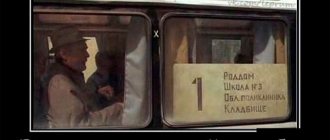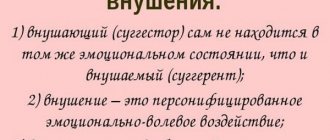Psychological trauma from childhood interferes with life
Often, the traumas we received in childhood prevent us from living in the present; a traumatized soul prevents us from being happy, fully enjoying life and creating it.
The stronger the mental trauma received in childhood, the stronger the mental pain in the present, the more often we return with our consciousness to an early traumatic situation.
The task of the present is to rid the soul of the mental traumas of childhood. On your own, resorting to self-therapy or with the help of a psychologist - the author of this blog.
Childhood mental trauma varies in its impact on the present, but all of them are associated with physical and psychological abuse.
Most soul traumas come from our childhood .
We all come from childhood. If you want to heal your soul now, heal the psyche that was crippled in childhood.
Psychological trauma and 3 types of psychological violence to which we were subjected as children
All people, without exception, have been subjected to these 3 types of mental violence, and any violence is necessarily associated with a restriction of freedom to express one’s will, express oneself and gain freedom in desires and actions.
Mental trauma associated with feeding.
Mental trauma associated with sleep.
Mental trauma associated with corporal punishment.
Plus prohibitions, psychological programming, curses, evil prophecies, a sea of negativity and abuse, deprivation, rods, punishment, hammering into the brain and purging free-thinking.
Healing the soul, liberation from the difficult legacy of the past is not an easy job, precisely because people who were traumatized in childhood have a lot of accumulated, suppressed and old wounds and feelings.
At the same time, if you know how to work with trauma correctly, then therapy or psychological therapy itself turns into an interesting and creative process.
Childhood mental trauma constantly reminds itself
Despite the fact that memories associated with psychological violence in childhood are very difficult and make us hurt our souls again and again, many traumatized people constantly mentally and in memory return to situations associated with trauma. They chew over and over again mental responses and reactions, they relive the trauma many times over.
Mental trauma from childhood, like a rubber band, constantly brings us back to where we were hurt and scared. Psychologist of Happiness (c)
For others, it is difficult to get rid of a lump of accumulated feelings that, for various reasons, were difficult or impossible to express then, and this trail of pain, self-rejection and a nagging sense of guilt, fear and anger stretches from the past, preventing one from being happy in the present. [yandex_direct]
Stages of experiencing psychotrauma
There are 5 stages of children experiencing psychological trauma:
- Negation. The child is in shock, he is not ready to accept what is happening to him at the moment, so his psyche is trying to defend itself. For example, a baby refuses to believe that his mother does not want to notice him because of some kind of misconduct.
- Anger. The baby sees that what happened is quite real. He disagrees, gets angry and angry, and can even destroy and break everything around him. If the situation does not change and the mother continues to ignore him, then after an emotional outburst there is a transition to the next stage.
- Bargain. The kid is trying to come to an agreement: “Mom, I’ll be good,” “Mom, please talk to me, and I’ll fix everything.” If the mother remains adamant, the child begins to truly grieve.
- Grief. The baby cries and sobs, realizing that the old relationship cannot be returned.
- Adoption. The baby learns to live with the fact that the relationship with his mother has changed and will no longer be the same.
Of course, in the example presented, the situation is a little exaggerated, and the injury caused by ignoring is not caused at once, but through periodic repetition. But with any injury, the child goes through these stages. The more serious the injury, the longer the stages extend over time.
Psychological trauma of childhood: stages of therapy
Today I will give you a brief plan for self-therapy of psychological trauma, and it does not matter whether it happened a long time ago, in childhood or in the recent past of adulthood.
Create fields of support and love to heal your soul from childhood trauma.
The main rule of working with trauma is to create a field of support, never work with trauma completely alone.
Conduct preliminary analytical work with a knowledgeable person, such as the author of this blog.
Write down the main stages of work on paper, start working on freeing the soul by working on accepting feelings: fear, pain, anger.
Give yourself permission to cry while dealing with trauma.
Attend psychotherapeutic groups where a field of acceptance and support is created.
Be sure to work on healing and accepting your Inner Child.
Do some of the work, at least several times, especially on the treatment of scenes of violence, with the support of a psychologist.
Prepare yourself for a long and painful healing process.
It is not always necessary to work with childhood trauma through experiencing traumatic situations and scenes of violence; then I will give you the main stages and forms of work.
[google_ad]
Forms of work and stages of treatment of psychological traumas of childhood and past
Here are the main stages and forms of working with mental trauma in free order, since the necessary sequence of working out each technique and each method of therapy must still be determined by a specialist .
Technique for blurring the past. Sometimes traumatic childhood situations are so painful that each new memory-immersion only intensifies the pain. It is for such situations, recorded in the subconscious, that the fogging technique is needed.
Healing the Inner Child. Any technique is suitable, many of which are described on this blog. Plus, the audio meditations I recorded a few years ago are very good and will strengthen your inner confidence to cope with other painful artifacts of childhood.
Acceptance of forbidden feelings. Very often, during the course of violence, important, basic emotions were suppressed or denied. Such as pain, crying, fear or anger. It is important to work on accepting them and learn to express them freely. Again, look for techniques in the sections of this blog that begin with the word “Self-therapy.” A knowledgeable psychologist will help you determine which emotions are prohibited or rejected - contact us.
Re-recording traumatic scenes of violence. There are many techniques and methods here. This includes the introduction of a magical assistant, letters from the future, and work with subpersonalities. The basic principle of rewriting - its essence - is presented in the diagram above. The main thing is to create a fork in the subconscious and switch it to a new vision of the scene in which there was no trauma; rather, on the contrary, maximum support and feelings of security were provided.
Written techniques for working with mental trauma . These are letters of forgiveness and gratitude, keeping diaries and logbooks of states, thoughts, deep-seated beliefs, working with drawings, clay and plasticine, followed by drawing up a written report.
Techniques for working with the subconscious. This is work aimed at attracting internal resources and assistants, animals of power and the use of magical objects, techniques for initiating power and directed dreaming.
This is not a complete list of techniques and techniques for self-therapy and psychotherapy for childhood trauma. If the mental trauma is serious, I recommend taking advantage of my New Year’s offer and starting work on healing the soul immediately after the January holidays.
[yandex_ads]
New Year's promotion from a happiness psychologist: healing the psyche with a 62% discount
I offer to purchase my 3 most popular services in 2015 and earlier with a 62% discount - it was taken from the numerological values of 2015 (8) and 2021 (9) and the age that the happiness psychologist reached (45) in the past year.
3 popular services from a happiness psychologist
These are the products from a happiness psychologist
Audio meditation on healing the Inner Child. What a wonderful work of strengthening the strength of the “I” and self-therapy for a soul wounded by trauma.
3-month subscription by correspondence with a happiness psychologist. An excellent analytical and supportive tool in working on mental trauma. Plus 1 Skype session as a gift.
4 online sessions on working with trauma. Not necessarily with trauma, but I initially offered this kind of work for analysis and changing the life scenario with a 20% discount.
Total 3 tools from a happiness psychologist for a total amount of 34,690 rubles. It is clear that I am offering such a fat discount (minus 15,290 rubles) to a limited audience, since there is a lot of work to be done on my part, so only the first 5 buyers will take advantage of this delicious New Year’s offer of mine.
We will begin trauma psychotherapy immediately after the New Year holidays and will continue until April 1, after which we will smile and breathe deeply from the soul freed from trauma.
Psychological trauma from childhood? Write to a psychologist!
How parents can help their child
The main thing that parents can do to help a child if he has psychological trauma is to change the strategy of his educational influences to a more benevolent one. To do this, you yourself need to come to a sufficiently high level of psychological and pedagogical knowledge. The main task is to create a comfortable environment for the baby in which he can fully develop and socialize without experiencing anxiety and fear.
To be confident in the correctness of your actions, as well as for more specialized help on how to overcome childhood psychological trauma, you need to contact a psychologist or psychotherapist.
My tips
The main wish for parents is to protect the psyche of their child from early childhood. Try to build a behavioral strategy with him in which the baby will feel comfortable:
- feel loved and needed;
- not feel humiliated;
- not be subjected to psychological and physical violence;
- know that almost any problem can be solved together with loved ones.
It’s a good idea to teach your child to express his feelings: “I’m angry,” “I’m sad,” “I’m sad,” so that if a traumatic situation arises, he can express everything that he is experiencing. This will help get rid of excess stress.
It is also worth teaching your child safe ways to express negative emotions: scribbling on a sheet of paper, tearing paper, beating a pillow.
If you have questions about how to behave correctly in the event of psychological trauma in a child or about ways to prevent it, you can contact a psychologist, for example, who is on staff at the educational institution that the child or teenager attends.
Contact cycle during combustion operation
The therapist's work in bereavement support can be viewed from the perspective of the contact cycle. This is a cycle of dealing with grief and loneliness. The first and second phases of the above process, which consists of 5 stages, correspond to pre-contact. Experiencing resentment and experiencing the event of separation is a separation from the background of the experience of separation and loss. The contacting phase corresponds to the stage of manifestation of aggression. This activity is directed outward. Note that this is the last phase when a breakthrough in aggression on the part of a person who is experiencing a situation of loss can be effective. He can restore the system if in his activity he catches up and retains an event that is receding into the past or a lost element of the system. If the loss of elements of the system is irreversible, this aggression “forms the boundary of separation,” and the energy dissipates in space, separating the subject from the past. The figure the subject contacts with the office becomes an expression of grief.
In a situation of loss, this phase ends with the subject at stage 4 encountering and coming into contact with the experience of grief. And the completion of this event will be from the point of view of the integration phase of the contact cycle. It is contact with the experience of loneliness, sadness and loss. At this stage, the scope of integration will include memories of past events.










